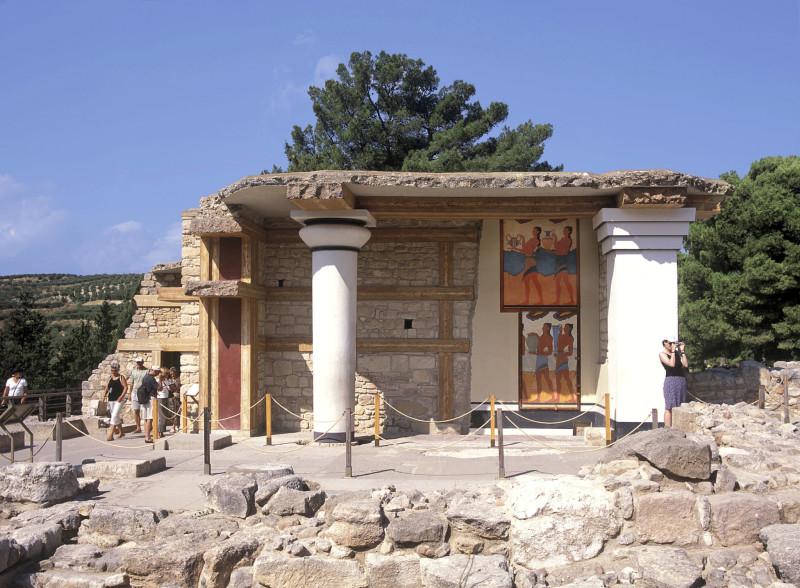For the gathering of the documentary material, the role of scientific institutions active for a number of years in the region of Crete was also essential.
The Ministry of Culture and Sports highlights her unique cultural identity of Crete within the application file for the serial registration six Minoan Palaces – Zakros, Knossos, Phaistos, Malia, Zominthos, Kydonias – in UNESCO World Heritage List prepared by the Directorate of Prehistoric and Classical Antiquities in collaboration with the Antiquities Ephorates of Crete and the support of the Region of Crete. For the gathering of the documentary material, the role of scientific institutions that have been active for many years in the area of Crete, such as the Foreign Archaeological Schools and the Athens Archaeological Society, as well as the excavators of the sites, was also essential.
As stated by the Minister of Culture and Sports, Lina Mendoni: “The palatial centers are among the most emblematic elements of the Minoan culture. Geographically they are distributed throughout Crete and their overall promotion, beyond the palace of Knossos, is a priority for the Ministry of Culture and Sports. The serial recording allows the major palatial centers to be displayed, but at the same time to have a full representation of all aspects of Minoan culture. The Preliminary Management Plan of the Minoan Palace Centers constitutes the “core” of their management with the aim of highlighting their outstanding universal value as a cultural asset, but also to ensure their authenticity and integrity. Through the candidacy of their serial registration in the UNESCO List of Monuments, the management of the Minoan palaces is consolidated on a holistic basis and their inclusion in a cultural route that highlights and assimilates developmentally the dynamics of this unique and particularly rich cultural heritage».
The Preliminary Management Plan of the Minoan Palaces, for which the Central Archaeological Council gave a unanimous positive opinion, follows the philosophy of a holistic framework for highlighting the Minoan culture, as reflected in the six archaeological sites to be registered, determines and ensures, in the short and long term, the ways of their protection and promotion. At the same time, it prescribes a system for the implementation of protection and management measures, in order to ensure their values and to pass them on as intact as possible to the next generations.
The Preliminary Management Plan of the Minoan Palace Centers includes in its three main axes actions for research and study, records the pathology of the monuments and proposes measures for their protection and restoration, the upgrading and development of infrastructure and services for visitors with the aim of overall improvement of their experience in archaeological sites. The goals formulated are specific and measurable, and depending on the priority of implementation and necessity are divided into immediate, medium-term and long-term actions.
With the revision, in 2014, of the Indicative List of our country for the candidate monuments for inclusion in the UNESCO World Cultural Heritage List and in order to ensure the most complete representation of the Minoan culture, the candidacy of Knossos until then was expanded and turned into a series entitled : “Minoan Palace Centers (Knossos, Phaistos, Malia, Zakros, Kydonia)”. Subsequently, it was deemed appropriate to include Zominthos in this series of nominations, so that the dispersion of the Minoan culture throughout Crete is more fully reflected. The six Minoan Palace Centers of the serial nomination were established at key points and geographically cover the entire island and chronologically the entire range of Minoan civilization from the Early and Middle Bronze Age of the foundation of the first palaces (1900-1700 BC) and the Late Bronze Age of the heyday of the new palaces (1700-1450 BC) up to the Final and Post-Palace period (1450-1100 BC).
Source :Skai
I am Frederick Tuttle, who works in 247 News Agency as an author and mostly cover entertainment news. I have worked in this industry for 10 years and have gained a lot of experience. I am a very hard worker and always strive to get the best out of my work. I am also very passionate about my work and always try to keep up with the latest news and trends.















